Market Overview
The Handicrafts Market is projected to grow from USD 808.11 billion in 2024 to USD 1,230.73 billion by 2032, expanding at a CAGR of 5.40%.
| REPORT ATTRIBUTE |
DETAILS |
| Historical Period |
2020-2023 |
| Base Year |
2024 |
| Forecast Period |
2025-2032 |
| Handicrafts Market Size 2024 |
USD 808.11 Billion |
| Handicrafts Market, CAGR |
5.40% |
| Handicrafts Market Size 2032 |
USD 1,230.73 Billion |
The handicrafts market encompasses the creation and distribution of handmade products that reflect cultural heritage, artistic expression, and skilled craftsmanship. These products include textiles, pottery, woodwork, metal crafts, Jewelry, and more, often made using traditional techniques passed down through generations. The market operates across local, national, and international levels, supporting both small artisans and larger cooperatives.
| USP & Key Offerings |
Target Audience |
Key Benefits for Stakeholders |
| Market Size in terms of Revenue (USD Billion) from 2018 to 2032, Historical Data 2018 to 2024, Forecasts & Predictive Analysis from 2025 to 2032 |
Industry Investors |
The report covers forecast and analysis for the Handicrafts Market on a global and regional level. |
| Market Drivers, Restraints, Opportunities, & Regional Market Trends, Market Attractiveness Analysis, Segment Analysis by Region and Country |
Consultants |
The study includes drivers and restraints of the Market along with the impact they have on the demand over the forecast period. |
| Competitive Landscape and Company Market Share Analysis |
Product Providers |
The report includes the study of potential growth opportunities available in the Handicrafts Market on a global level. |
| Porter’s Five Forces Analysis, Value Chain Analysis and PEST Analysis |
Manufacturers |
Porter’s five forces analysis illustrates the degree of competition along with the potency of buyers and suppliers operating in the industry. |
| Regulatory Landscape and End User Landscape |
End Users |
The report covers forecast and analysis for the Handicrafts Market on a global and regional level. |
| Market Size in terms of Revenue (USD Billion) from 2018 to 2032, Historical Data 2018 to 2024, Forecasts & Predictive Analysis from 2025 to 2032 |
Researchers and Academics |
The report offers detailed insights into key market players, including their market share, strategic developments, product offerings, and regional presence, enabling stakeholders to benchmark performance, identify strategic partnerships, and craft effective go-to-market strategies. |
Executive Summary
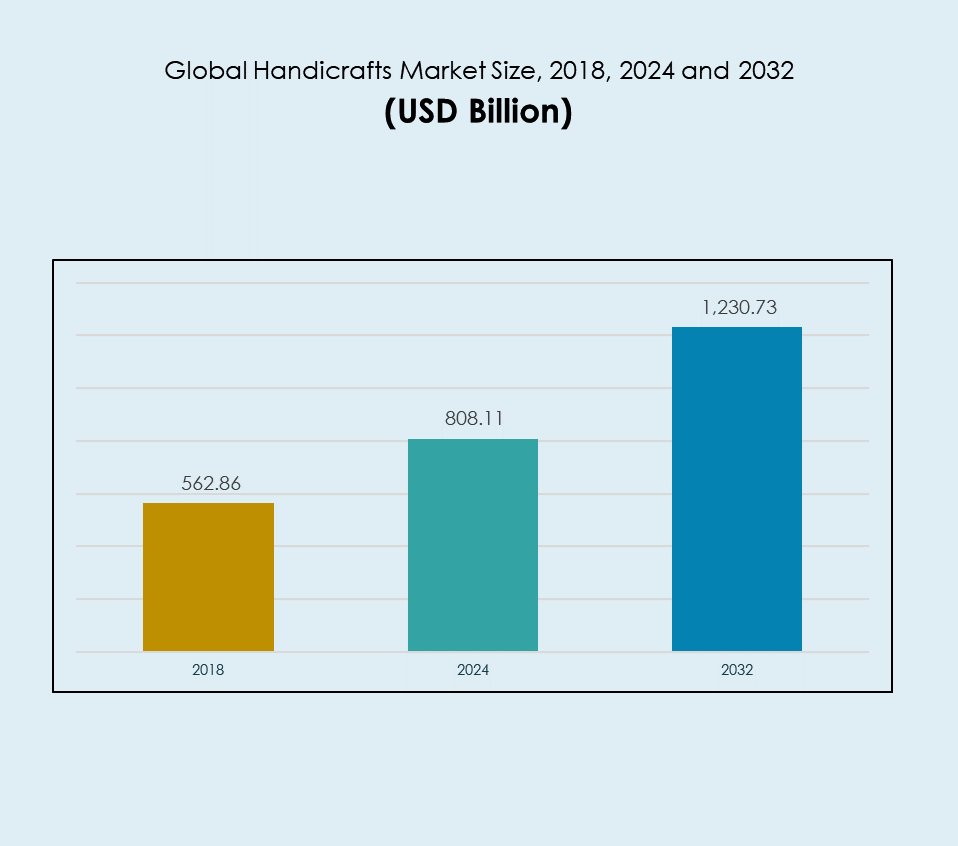
Regional Summary
The global handicrafts market has shown sustained growth, rising from USD 562.86 billion in 2018 to a projected USD 1,230.73 billion by 2032, registering a compound annual growth rate (CAGR) of 5.40%. This steady expansion is driven by increasing consumer demand for handmade, sustainable, and culturally rich products, alongside the rising influence of e-commerce platforms that are transforming how artisans access international markets.
The growing preference for eco-friendly products, combined with a global movement towards ethical consumerism, is fueling market momentum. Handmade goods, ranging from textiles, pottery, and woodcraft to handcrafted Jewelry and decorative items are gaining popularity across sectors including home décor, fashion, gifting, and tourism retail.
Access crucial information at unmatched prices!
Request your sample report today & start making informed decisions powered by Credence Research Inc.!
Download Sample
Asia Pacific continues to dominate the global handicrafts market, bolstered by rich artisanal heritage, low-cost skilled labor, and strong government initiatives to support craft clusters in countries like India, China, Vietnam, and Indonesia. The region is also experiencing a rise in exports and digitally enabled small businesses, helping local artisans reach global buyers more efficiently. Meanwhile, regions such as Latin America and the Middle East & Africa are showing promising growth trajectories, fueled by initiatives to revive traditional crafts, increased tourism, and growing support for women-led artisan enterprises.
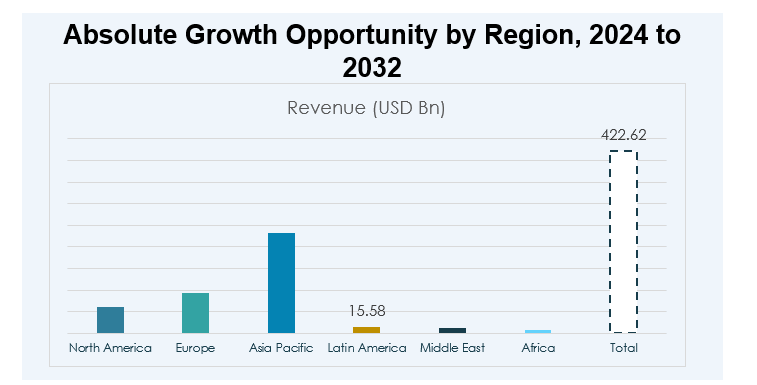
Between 2024 and 2032, the global handicrafts market is projected to create an absolute growth opportunity of USD 422.62 billion, reflecting strong global demand for artisan-made, sustainable, and culturally rich products. This expansion underscores a significant consumer shift toward handcrafted goods that offer authenticity, ethical sourcing, and aesthetic value in contrast to mass-produced alternatives. From handwoven textiles and handmade ceramics to traditional metalwork and indigenous craft decor, handcrafted products are becoming increasingly central to the global lifestyle, home décor, and gifting sectors.
The growth is further fueled by rising digital integration, where e-commerce platforms, online craft marketplaces, and social media-driven microbusinesses are empowering artisans to reach global buyers directly. Enhanced logistics, digital payment systems, and mobile marketing are breaking traditional barriers, making global handicrafts exports more scalable and accessible than ever. Amid this robust global momentum, Latin America is expected to contribute USD 15.58 billion to the total growth, an encouraging indicator of regional revival and international interest in Latin American folk art, indigenous craft traditions, and eco-friendly handmade products. Countries such as Mexico, Peru, Colombia, and Brazil are witnessing a resurgence in artisanal entrepreneurship, supported by cultural tourism, government craft development programs, and increasing visibility on global marketplaces.
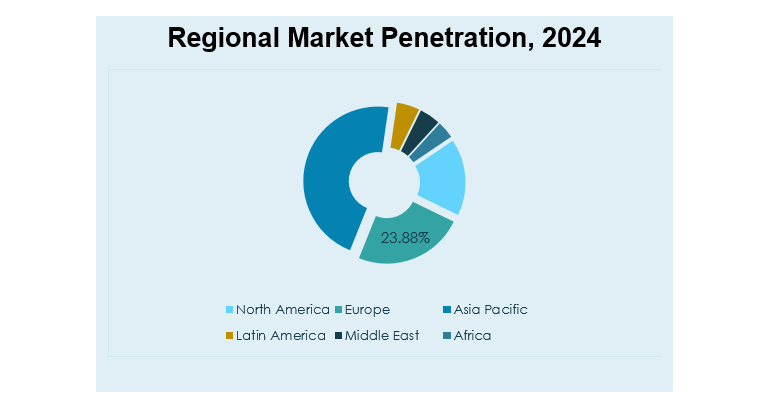
In 2024, Europe accounts for 23.88% of the global handicrafts market, reinforcing its role as a key hub for artisan appreciation, cultural preservation, and sustainable consumer trends. This considerable market share is supported by a deep-rooted tradition of craftsmanship, widespread consumer interest in ethically sourced handmade goods, and well-developed infrastructure for premium retail, design fairs, and artisan cooperatives. Across countries like France, Italy, Spain, and the Nordic nations, there is sustained demand for bespoke textiles, hand-thrown ceramics, artisanal woodwork, and heritage-inspired Jewelry, often characterized by authenticity and limited production. Moreover, Europe’s robust tourism economy creates consistent demand for locally made souvenirs and artisanal gifts, especially in cultural hotspots and UNESCO-recognized craft villages.
A key recent development bolstering Europe’s handicrafts sector is the impactful “Crafting Europe” project led by the European Crafts Alliance (ECA). This initiative has delivered significant benefits to the sector by enhancing collaboration among artisans, promoting craft education, and increasing visibility of European crafts on a global stage. The project supports innovation while preserving traditional techniques, encouraging sustainable practices, and fostering cross-border partnerships. By empowering artisan communities and integrating digital tools for marketing and sales, “Crafting Europe” is strengthening the resilience and competitiveness of European handicrafts in an increasingly globalized market.
HANDICRAFTS MARKET FORCES & INDUSTRY PULSE

Untapped Horizons – Growth Potential & Opportunities and Strategic Navigation – Industry Frameworks
The global handicrafts market is poised for substantial growth, driven by increasing consumer demand for authentic, sustainable, and culturally rich products. Rising awareness about ethical sourcing, coupled with growing interest in eco-friendly and artisanal goods, is fueling market expansion across regions. The market’s growth potential is further enhanced by digital transformation, which empowers artisans and small-scale producers to access global audiences through e-commerce platforms, social commerce, and online marketplaces.
The global handicraft market is poised for significant growth, driven by an increasing demand for woodwork, fueled by the enduring popularity of traditional and rustic themes in home décor. This demand is amplified by residential consumers’ growing preference for customized, unique handmade items that hold sentimental and emotional value. Key players in this evolving market include countries such as India, Australia, China, Germany, and the United States, with India emerging as a major hub for durable handicraft production, thanks to its rich cultural heritage and government initiatives like the ‘Make in India’ campaign.
The handicraft industry is on the verge of a transformative era. The intersection of consumer preferences, market dynamics, and technological advancements signals an exciting future for this sector. This analysis explores potential growth areas likely to shape the handicraft industry in the coming years.
Innovations in product design, customization, and collaborations with fashion and interior design sectors are opening novel revenue streams. Additionally, growing corporate interest in fair trade certifications and transparent supply chains is fostering trust and boosting consumer confidence globally. To capitalize on the growth potential, stakeholders in the handicrafts market must navigate a complex industry landscape shaped by evolving consumer preferences, regulatory standards, and technological advancements.
Ecosystem Dynamics – Value Chain Analysis
| Raw Materials & Design Development |
Production Processes & Skill Enhancement |
Digital Platforms & Marketplace Integration |
Consumer Segments & Use Cases |
Regulation, Certification & Sustainability |
| Sourcing of natural, organic, and locally available materials such as wood, fabric, clay, metal, jute, and bamboo. Focus on eco-friendly and ethically harvested resources. Emphasis on preserving regional design identities and traditional motifs. |
Handcrafted production using traditional techniques passed down through generations. Growing investment in artisan skill development, digital literacy, and quality training via NGOs, government schemes, and private collaborations. |
E-commerce, B2B platforms, and social commerce enable global reach. Integration of mobile-first websites, digital storytelling, secure payment systems, and multilingual catalogs enhances visibility and direct-to-consumer sales. |
Products cater to home décor, fashion accessories, gifting, cultural tourism, ethical interior design, and corporate gifting. Consumer preferences lean toward handmade, customizable, and sustainable goods. |
Growing adoption of fair-trade certification, GI tagging, and artisan-authenticity labels. Emphasis on IP protection, labor rights, and traceability. Sustainability frameworks focus on eco-packaging, carbon footprint reduction, and ethical sourcing. |
Competitive Landscape
Company Market Share Analysis
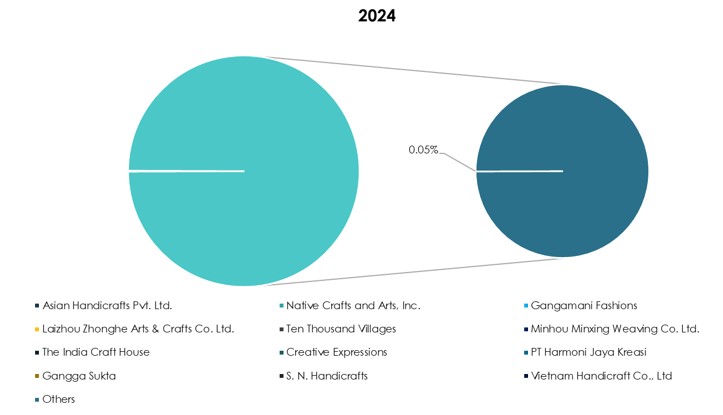
The global handicrafts market in 2024 is defined by an extremely fragmented structure, shaped by countless micro-enterprises, artisan groups, and local makers operating across diverse cultural, material, and design traditions. The sector is rich in heritage and decentralized by nature, with no single player commanding significant market dominance.
Among the named participants in this diverse ecosystem are Asian Handicrafts Pvt. Ltd., Native Crafts and Arts, Inc., Gangamani Fashions, Laizhou Zhonghe Arts & Crafts Co. Ltd., Minhou Minxing Weaving Co. Ltd., The India Craft House, Creative Expressions, PT Harmoni Jaya Kreasi, Gangga Sukta, S. N. Handicrafts, and Vietnam Handicraft Co., Ltd. These companies, while recognized in their respective niches or regions, account for only fractions of the total market, each contributing less than 0.05% of global share.
The only exception among these is Ten Thousand Villages, a fair-trade pioneer, which holds a measurable global market share of 0.05%. Known for its commitment to ethical sourcing, sustainable production, and support of marginalized artisans, Ten Thousand Villages operates through both physical retail stores and an established online presence serving as a model for artisan-focused scalability within a fragmented marketplace. The remaining 99.87% of the market is composed of unorganized, small-scale, and often informally structured artisan producers, highlighting both the richness of global craft traditions and the lack of brand consolidation. This fragmentation presents a significant growth opportunity for aggregators, digital marketplaces, and fair-trade networks to professionalize supply chains while preserving authenticity.
Strategic Developments
In October 2024, the Andhra Pradesh Handicrafts Development Corporation (APHDC) initiated a training program aimed at empowering artisans through the creation of eco-friendly products using water hyacinth.
In June 2023, Amazing Home, a brand under Amazon, has introduced a collection of home décor and furniture aimed at offering consumers stylish solutions to elevate their home aesthetics.
In January 2023, Target, a major U.S. retailer, has unveiled a new line of home accessories, including tables and rugs, through its designer collaborations such as Hearth & Hand with Magnolia, Opalhouse designed with Jungalow, and Threshold with Studio McGee.
In September 2022, Crate & Barrel, a U.S. furniture retailer, has partnered with renowned interior designer Athena Calderone to create an exclusive home collection featuring furniture, textiles, glassware, and other décor items.
Segment Analysis
Decoding Craftsmanship: Jewelry Accounts for 27.84% of Handicrafts Demand in 2024
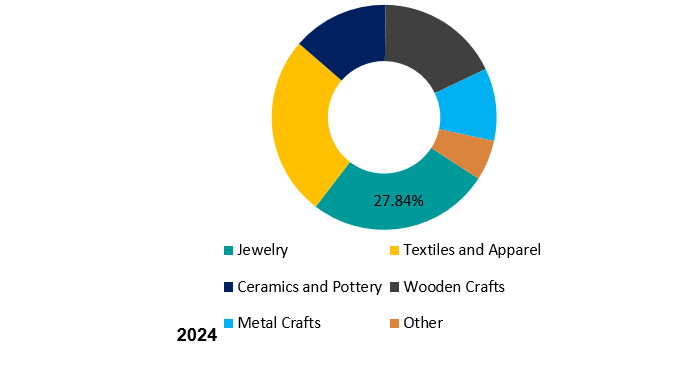
In 2024, the global handicrafts market encompasses a diverse range of artisanal products, including Jewelry, Textiles and Apparel, Ceramics and Pottery, Wooden Crafts, and Metal Crafts. Each segment reflects unique cultural traditions and craftsmanship, catering to a wide audience seeking authentic, handmade goods.
Jewelry holds a significant share of approximately 27.84% of the market, underscoring its lasting appeal as both a symbol of cultural heritage and personal expression. This category includes intricately designed pieces crafted from silver, gold, beads, enamel, and gemstones; all produced with meticulous traditional techniques. The demand for handcrafted jewelry is further fueled by a growing consumer preference for sustainable and fair-trade practices, including the use of recycled metals and conflict-free gemstones. Collaborations between artisans and contemporary designers are also driving innovation, merging heritage craftsmanship with modern aesthetics to captivate a global audience.
Material Composition Fuels USD 226.20 Billion Growth of Fine Fabrics in 2024
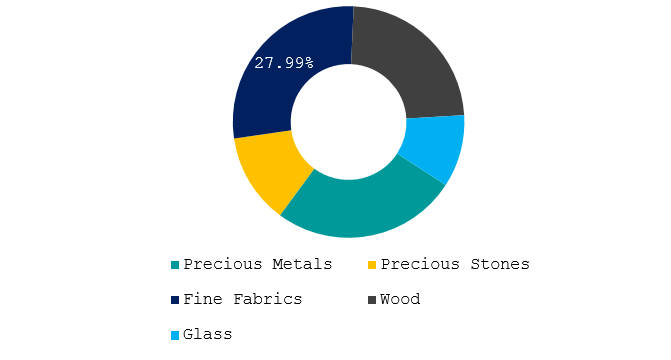
In 2024, material choice remains a key factor shaping consumer preferences and product positioning within the global handicrafts market. Among the materials, Fine Fabrics lead the way, driven by the increasing demand for naturally dyed, handwoven textiles used in apparel, accessories, and home décor. This trend reflects a growing global interest in eco-conscious slow fashion and the preservation of traditional weaving techniques across Asia, Africa, and Latin America.
Following closely are Precious Metals, which play a critical role in the jewelry and ceremonial crafts sectors. Artisanal techniques in gold, silver, and bronze crafting continue to captivate premium buyers seeking unique and culturally rich pieces. Wood-based handicrafts maintain a strong presence as well, favoured for their organic appeal and harmony with minimalist and sustainable interior design trends.
Precious Stones enhance the luxury quotient of handmade accessories and decorative items, appealing to consumers who value exclusivity and natural beauty. Lastly, Glass remains relevant in decorative and functional crafts, with techniques such as stained glass, blown glass, and fused art offering versatile design possibilities for giftware and home décor.
Regional & Country Insights
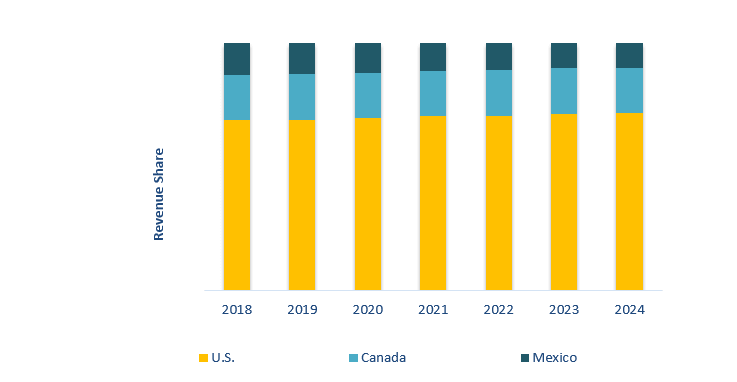
From 2018 through 2024, the North America handicrafts market has been predominantly led by the United States, consistently accounting for over 85% of the region’s total revenue. This leadership stems from a combination of strong consumer affinity for artisanal, ethically sourced goods, a well-established network of craft fairs and independent boutiques, and a thriving online marketplace for handmade products. The U.S. market continues to benefit from heightened demand across categories such as home décor, personalized gifts, fashion accessories, and cultural collectibles, especially among millennials and Gen Z buyers favoring authenticity and sustainability.
Canada follows as the second-largest contributor in the region, showing steady growth supported by rising support for local artisans, Indigenous crafts, and eco-friendly design movements. The country’s emphasis on multicultural representation and heritage preservation is fueling demand for handcrafted goods with cultural significance, particularly in urban centers and tourism-driven regions.
Shape Your Report to Specific Countries or Regions & Enjoy 30% Off!
Company Profile
Asian Handicrafts Pvt. Ltd.
Asian Handicrafts Pvt. Ltd. is a design-driven Manufacturer Export House based in Gurgaon (Delhi – NCR), India, with over four decades of experience in producing and exporting Indian handicrafts. Recognized as a Government Export House and ISO 9001:2015 certified, the company specializes in a diverse range of products, including gift items, home décor, Christmas decorations, fashion Jewelry, and accessories.
The experienced in-house design and product development team at Asian Handicrafts continuously updates the product range, employing innovative techniques and a mix of materials to align with the latest international trends. Asian Handicrafts has established a strong reputation for creativity, quality, and timely delivery, positioning itself as a leading name in the handicraft industry.
Native Crafts and Arts, Inc.
Native Crafts and Arts, Inc. is a family-owned company based in the Philippines, originally established as a trading house in 1966. In 1994, the company shifted its focus to the manufacture and export of home decorations and lighting accessories, including traditional handicrafts and innovative design-oriented pieces. The company has successfully catered to clients in America, Europe, and Asia, continually exploring sustainable and creative methods to produce items that enhance living spaces with joy, light, and life.
Gangamani Fashions
Gangamani Fashions (Arts & Crafts) is a leading manufacturer and exporter of exquisite handicrafts, specializing in a diverse array of products, including marble and wooden handicrafts, brass artware, corporate gift items, and customized gifts. The company offers a range of artistic pieces, from everyday use items to bespoke masterpieces for home décor, with options for personalization. It has gained recognition for its quality, innovative designs, and timely deliveries. The company is committed to meeting customer expectations, providing unique corporate gifts, handicrafts, accessories, and promotional items suitable for any occasion.
Laizhou Zhonghe Arts & Crafts Co. Ltd.
Laizhou Zhonghe Arts & Crafts Co., Ltd. is a prominent manufacturer and exporter based in Laizhou, China, specializing in a wide range of high-quality arts and crafts products. The company focuses on traditional handicrafts, utilizing local materials and skilled craftsmanship to create unique items that reflect rich cultural heritage. Zhonghe offers an extensive product line, including decorative figurines, home décor, garden ornaments, and customized gifts. By combining traditional techniques with modern designs, the company caters to various market demands and preferences, ensuring that each piece is both functional and aesthetically pleasing.
Ten Thousand Villages
Ten Thousand Villages is a US-based non-profit organization that sells fair trade products from artisans in developing countries. The product range includes a diverse assortment of handmade goods, such as home décor, kitchenware, Jewelry, textiles, and gifts. Each item reflects the unique cultural heritage and craftsmanship of the artisans who create them. By ensuring fair wages and ethical working conditions, Ten Thousand Villages not only supports the livelihoods of artisans but also helps preserve traditional crafts and empower communities.
Minhou Minxing Weaving Co. Ltd.
Minhou Minxing Weaving Co., Ltd. is a leading manufacturer based in Minhou, Fujian Province, China, specializing in the production of high-quality woven products. The company focuses on creating a diverse range of textiles, including bags, home furnishings, and industrial fabrics. Utilizing advanced weaving techniques and modern production facilities, Minxing Weaving emphasizes quality and durability in its products. The company sources materials responsibly and adheres to strict quality control standards, ensuring that each item meets international specifications.
The India Craft House
The India Craft House is a digital platform dedicated to preserving and celebrating India’s rich craftsmanship heritage. Launched nearly a decade ago as a social enterprise, its mission is to uplift Indian artisans while sharing their intricate skills with a global audience. The platform curates a distinctive range of authentic Indian crafts, transforming traditional art forms into contemporary products. Customers can discover these unique items through the online portal, www.theindiacrafthouse.com, as well as through direct offline sales for customized and bulk gifting options tailored for events and corporate functions.
Creative Expressions
The company is a prominent UK-based manufacturer with a legacy in rubber stamp production that began in the 1970s. It prioritizes customer satisfaction and is dedicated to delivering high-quality products and services. The friendly and knowledgeable Customer Service Team is always ready to assist with inquiries. Recognized as a leader in the arts and crafts industry, the company offers a wide range of innovative products, including coloring mediums, craft dies, embossing folders, stamps, and stencils. Collaborations with industry-renowned designers ensure the creation of unique items, many of which are manufactured in the UK.
PT Harmoni Jaya Kreasi
PT Harmoni Jaya Kreasi is a leading Indonesian company renowned for its high-quality handicrafts. Established to promote local artisans and traditional craftsmanship, the company has gained a strong presence in both domestic and international markets. It specializes in a diverse range of products, including home décor, gift items, and fashion accessories, PT Harmoni Jaya Kreasi emphasizes sustainable materials and traditional techniques. By collaborating with skilled artisans, the company preserves Indonesia’s rich cultural heritage while offering innovative designs.
Gangga Sukta
Gangga Sukta is an independent handicraft manufacturer, wholesaler, and exporter based in Bali. Gangga Sukta offers a diverse range of items, including decorative accessories and home decorations. The company has successfully sold millions of products and continues to expand its offerings. With a focus on global distribution, Gangga Sukta ships to major markets in America, Europe, Australia, and Asia, providing worldwide shipping to wholesale distributors, retailers, and individual buyers.















